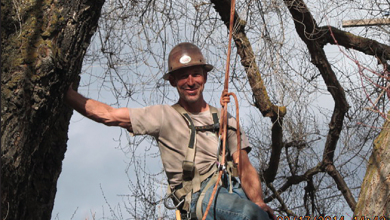The Hollow Truth…
Are hollow trees safe? A question many people have, and often pondered. Truth is, trees just don’t care, one way or the other… Hollow trees have stood for hundreds, if not thousands of years!
You see, the core of any tree is, for lack of a better term, dead. The only place where cell division (life) takes place, is just under the protective layer of corky cells, (which are essentially dead themselves) that we refer to as bark. Structurally, the core isn’t really needed by a tree given the “walls” of the stem be it branch or trunk are proportionate to the diameter of the cylinder it supports, and that the cylinder wall isn’t compromised by a breach in that wall, such as a mechanical injury, or decay. A good example of this is putting your full weight slowly and evenly down on an aluminum can. As long as you don’t change that load by denting the side of the can, which illustrates the “breach”, everything is hunky-dory! Now that same can has a very small wall-to-diameter ratio and it still has a high resistance to fail given it’s loading. The driveshaft in a dragster takes a tremendous torque load when the tires hook up and max power applied but driveshaft failure isn’t very common mid-span, it usually snaps at either end.
The thought of somehow filling the cavity to “help” a tree comes to mind and the short answer is the tree doesn’t really want you to do that. Moisture speeds decay, and it will be trapped in the cavity no matter what kind of “filler” you use.
Gentle cleaning, maybe a shop vacuum to suck out the loose bits and leave as is. I will sometimes stuff wadded up strawberry netting in the cavity so as to be able to pull it out periodically and shake out the leaves and accumulated debris, but that is all. If it is possible to attract a honeybee hive to the cavity, all the better! Honeybees tend to keep a clean house.
A water-filled cavity is of little concern as decay has a rough time thriving underwater. An anchor has little chance of rusting at the bottom of a lake as oxidization (rust) needs, well, oxygen…
All the above should be considered when addressing your hollow tree, but what is the formula to answer the wall to diameter ratio? That is the million-dollar question! With certain grades of steel and a known load factor, the equation is doable. With the extreme variety of wood in trees, it gets complicated, and it goes without saying that it really is a guess, at best…
I will say that I have seen hollow trees that have not failed that just boggle the mind! Hollow trees are WAY stronger than you think. The factors that need to be determined are loading, exposure, torque, lean, and integrity of the cylinder itself. Oh yeah, a little bit of guessing…



